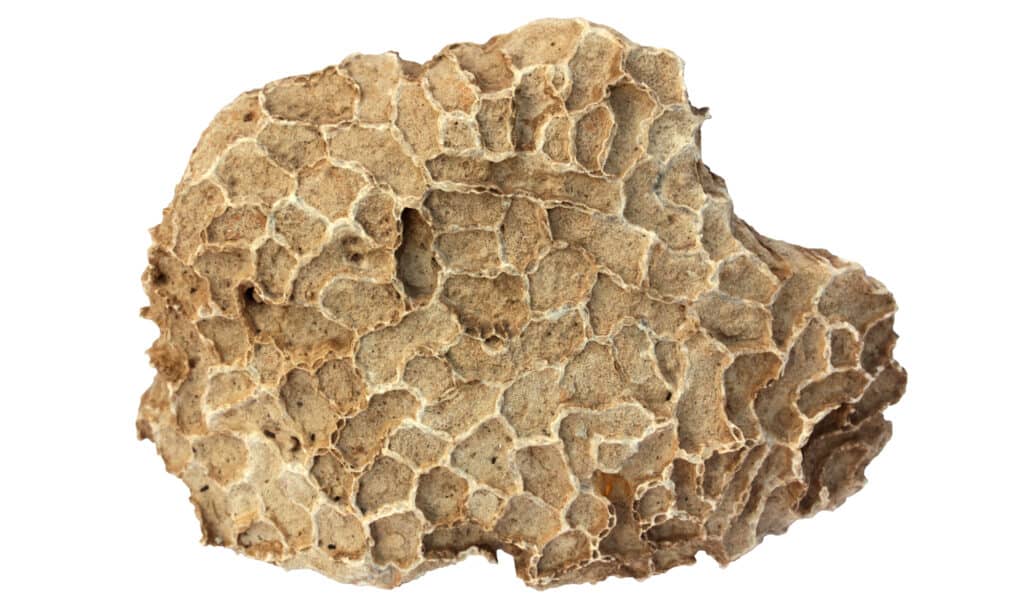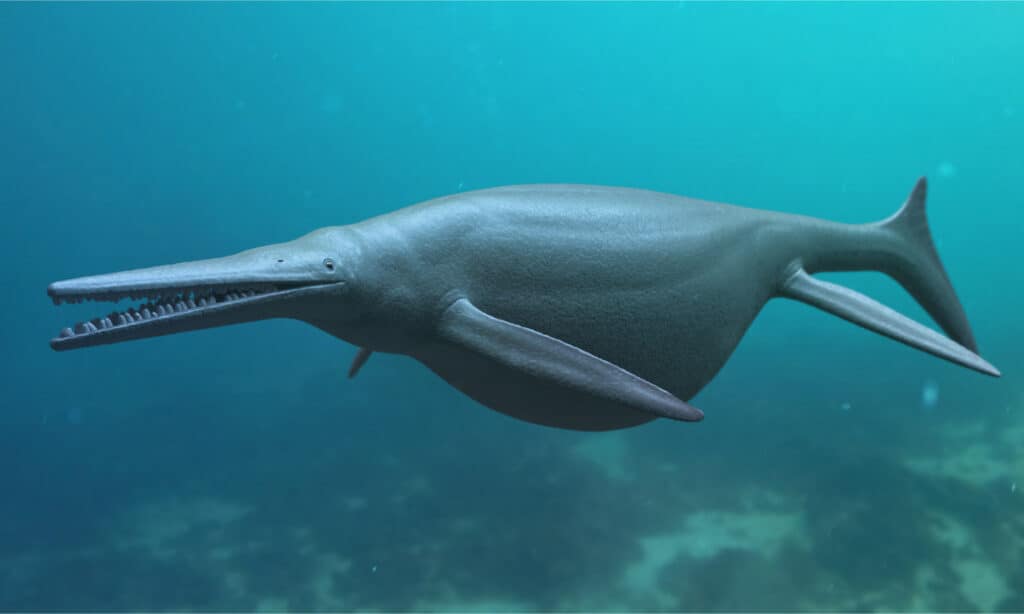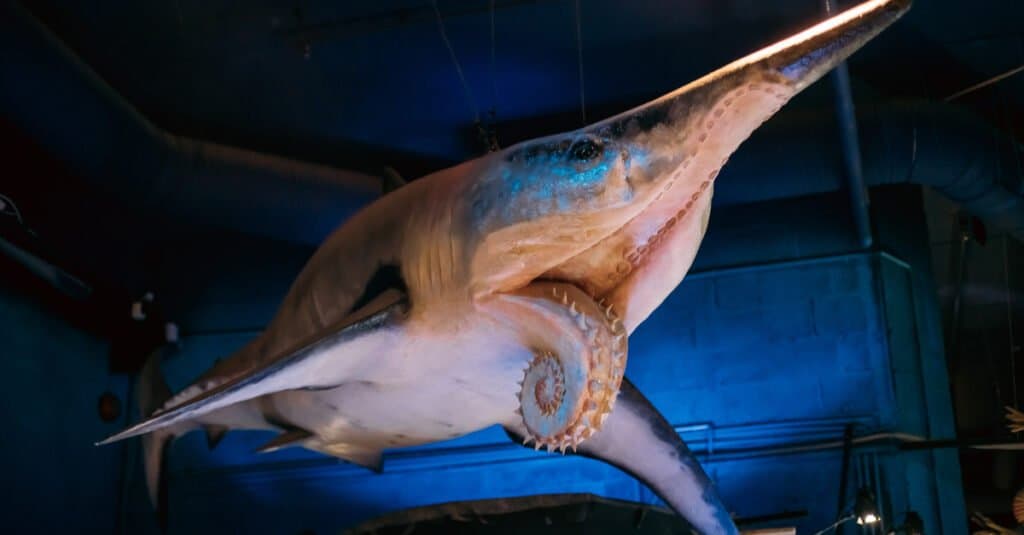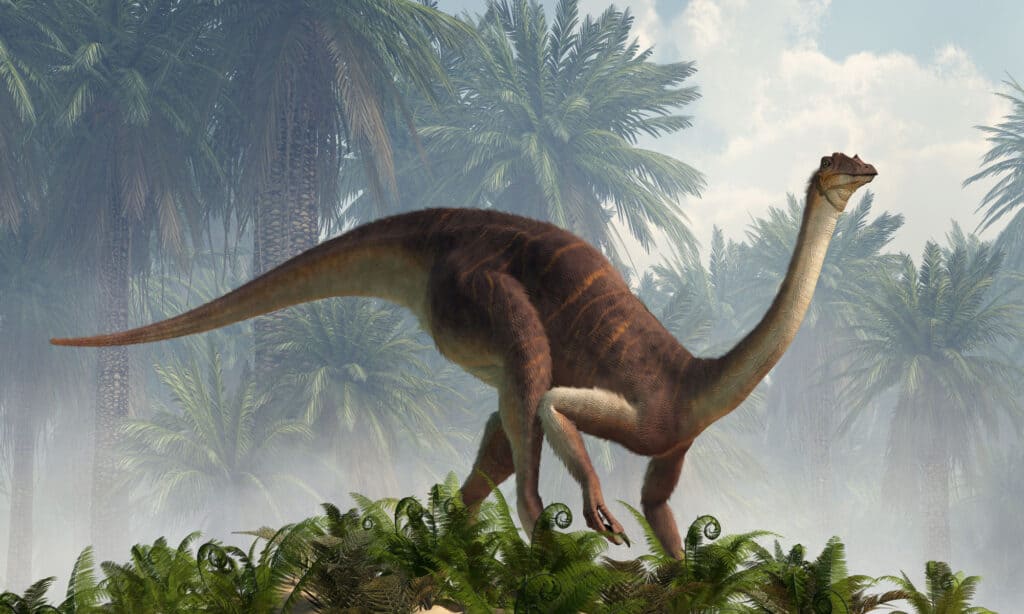Idaho is also known as the “Gem State.” It is located in the Western United States. It is covered by mountains, forests, farmlands, rivers, and marshes. Its forests host more than 300 animal species, while its rivers are home to approximately 100 fish species.
Before modern animal species found their home in Idaho, many prehistoric animals inhabited the territory. That’s why paleontology in the region is a developed research field. Idaho’s fossil record started with the Precambrian when bacteria inhabited the area. Then, during the Paleozoic era, the Gem State was covered by a shallow sea that hosted brachiopods, trilobites, and corals. Later, bryozoans, ichthyosaurs, and prehistoric sharks arrived. During the Cretaceous period, Idaho was home to dinosaurs. The Pleistocene brought short-faced bears, giant sloths, mammoths, and saber-tooth cats.
Let’s find out some incredible things about 6 of these prehistoric animals that lived in Idaho!
1. Trilobite

Trilobites first appeared 521 million years ago and became more and more frequent during the Paleozoic.
©SciePro/Shutterstock.com
| Trilobite | |
|---|---|
| Kingdom | Animalia |
| Phylum | Arthropoda |
| Clade | Arachnomorpha |
| Subphylum | Trilobitomorpha |
| Class | Trilobita |
| Living period | 521-252 million years ago |
Trilobites were marine arthropods, meaning invertebrate species with an exoskeleton, appendages, and a segmented body. Trilobites first appeared 521 million years ago and became more and more frequent during the Paleozoic. Very few trilobites were left when the mass extinction happened 252 million years ago.
These arthropods inhabited the territory of Idaho during the Paleozoic era when a shallow sea covered the state. Other aquatic species living in the area include brachiopods and corals. Because they evolved rapidly and thousands of species appeared, trilobite fossils can now be found worldwide. The United States’ best fossil collection is in Hamburg, New York.
2. Corals

Corals are marine invertebrates that inhabit tropical oceans.
©www.sandatlas.org/Shutterstock.com
| Corals | |
|---|---|
| Kingdom | Animalia |
| Phylum | Cnidaria |
| Subphylum | Anthozoa |
Corals are marine invertebrates that inhabit tropical oceans. They settled in Idaho during the Carboniferous period when the territory was underwater. Some extinct coral species that found their home in what we now call Idaho are tabulate corals and horn corals.
Tabulata, or tabulate corals, lived during the Paleozoic. They disappeared after the Permian-Triassic extinction event.
Horn corals, or Tetracorallia, lived from the Ordovician to Late Permian periods.
3. Ichthyosaur

Ichthyosaurs lived in Idaho during the Mesozoic era, from the Triassic until the Jurassic periods.
©Giant Ichthyosaurus Aquatic Dinosaur 3D Rendered/Shutterstock.com
| Ichthyosaur | |
|---|---|
| Kingdom | Animalia |
| Phylum | Chordata |
| Class | Reptilia |
| Clade | Eoichthyosauria |
| Order | Ichthyosauria |
| Living period | Mesozoic era; 250-90 million years ago |
Ichthyosaurs were marine reptiles belonging to the Ichthyosauria order. These reptiles appeared approximately 250 million years ago during the Mesozoic era and went extinct 90 million years ago. Their name comes from Ancient Greek and means “fish lizard.” Ichthyosaurs could be as large as 66 feet long or as small as 3 feet. They had short necks and long snouts. Their heads resembled those of porpoises, and their general appearance was similar to that of dolphins. Ichthyosaurs lived both on the coast and in the open ocean. They were carnivorous animals that fed on cephalopods, fish, and other vertebrates, even smaller ichthyosaurs.
Ichthyosaurs lived in Idaho during the Mesozoic era, from the Triassic until the Jurassic periods. At the time, the territory was covered by water.
4. Prehistoric sharks

Sharks first inhabited Earth approximately 400 million years ago.
©Grisha Bruev/Shutterstock.com
| Prehistoric sharks | |
|---|---|
| Kingdom | Animalia |
| Phylum | Chordata |
| Class | Chondrichthyes |
| Subclass | Elasmobranchii |
| Infraclass | Euselachii |
| Superorder | Selachimorpha |
Sharks first inhabited Earth approximately 400 million years ago, making them one of the oldest extant animal species! They lived in what we now call Idaho from the Triassic until the Jurassic with many other aquatic species. At the time, the territory was a highly marine environment.
A shark fossil was discovered in Idaho at a Monsanto mine. It was later classified as belonging to a helicoprion, also called a buzzsaw shark, that measured approximately 25 feet long. Scientists believed it inhabited the eastern region of the state. Besides Idaho, they inhabited Nevada, Texas, Utah, Wyoming, and California. Other countries where helicoprion fossils were found include Russia, China, Japan, Kazakhstan, Canada, and Norway.
5. Dinosaur

Dinosaurs were fascinating reptiles that lived during the Mesozoic era, approximately 243-233 million years ago.
©Daniel Eskridge/Shutterstock.com
| Dinosaur | |
|---|---|
| Kingdom | Animalia |
| Phylum | Chordata |
| Clade | Dracohors |
| Clade | Dinosauria |
| Living period | Mesozoic era, 243-233 million years ago |
If you’ve watched “Jurassic Park,” you already know something about dinosaurs. In fact, we’ve all heard about dinosaurs, whether from movies, books, or documentaries. Dinosaurs were fascinating reptiles that lived during the Mesozoic era, approximately 243-233 million years ago. After the Tr-J (the Triassic-Jurassic extinction event) and until the Cretaceous period, dinosaurs were the dominant vertebrates. Despite the fact that we now portray dinosaurs as cruel and monstrous creatures, they were very social animals.
Dinosaurs were either herbivorous or carnivorous. Some species were bipedal, and others were quadrupedal. People tend to think that other prehistoric animals, such as mosasaurs or pterosaurs, are dinosaurs, but, scientifically speaking, they are part of different classifications.
Dinosaurs were either herbivorous or carnivorous. Some species were bipedal, and others were quadrupedal. People tend to think that other prehistoric animals, such as mosasaurs or pterosaurs, are dinosaurs, but, scientifically speaking, they are part of different classifications.
Dinosaurs inhabited Idaho during the Cretaceous. At the time, the territory was a combination of terrestrial habitats and freshwater. The freshwater environments were home to mollusks and ostracods, and the dinosaurs inhabited the land. Archeologists believe Thyreophora, also called armored dinosaurs or shield bearers, inhabited the region. Another dinosaur family believed to have lived in Idaho was the Ceratopsidae, or horned dinosaurs.
6. Mammoth

Mammoths disappeared approximately 4,000 years ago.
©Dotted Yeti/Shutterstock.com
| Mammoth | |
|---|---|
| Kingdom | Animalia |
| Phylum | Chordata |
| Class | Mammalia |
| Order | Proboscidea |
| Family | Elephantidae |
| Subfamily | Elephantinae |
| Tribe | Elephantini |
| Genus | Mammuthus |
| Living period | Pliocene – Holocene epochs |
Mammoths lived from the Pliocene epoch until the Holocene epoch. The oldest mammoth is the South African mammoth, which is believed to have appeared 5 million years ago in southeastern Africa. Mammoths resembled elephants. They had long, curved tusks, and some species were covered with long hair. They were as tall as 13.1 feet at the shoulder and weighed 8.8 short tons. Mammoth teeth findings showed that they primarily fed on cactus, trees, leaves, and shrubs.
Mammoths disappeared approximately 4,000 years ago. The woolly mammoth is the last mammoth species. Most mammoths died during a mass extinction that killed most living species.
Mary Thompson, collections manager at the Idaho Museum of Natural History at Idaho State University, stated that Idaho is one of the best fossil sites in North America. In 2015, archeologists from Idaho found a 12-foot Columbian mammoth tusk in Boise, Idaho. They believe it belonged to a 16–19-year-old mammoth that lived between 72,000 and 200,000 years ago. Other fossils discovered in the area include remains of dire wolves, giant slots, camels, giant lions, and mastodons.
The photo featured at the top of this post is © Giant Ichthyosaurus Aquatic Dinosaur 3D Rendered/Shutterstock.com
Thank you for reading! Have some feedback for us? Contact the AZ Animals editorial team.






